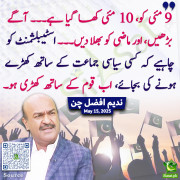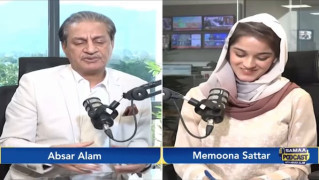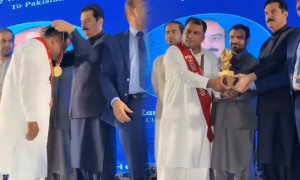RiazHaq
Senator (1k+ posts)
Rising buying power of rapidly expanding middle class in Pakistan drove the nation's media advertising revenue up 14% to a record Rs. 76.2 billion ($727 million) in FY 2015-16. Half of this ad spending (Rs. 38 billion or $362 million) went to television channels while the rest was divided among print, outdoor, radio and digital media.
[TABLE="class: tr-caption-container"]
[TR]
[TD="align: center"]

[/TR]
[TR]
[TD="class: tr-caption, align: center"]Media Ad Revenue by platform. Source: Aurora[/TD]
[/TR]
[/TABLE]
Digital media spending rose 27% in 2015-16 over prior year, the fastest of all the media platforms. It was followed by 20% increase in radio, 13% in television, 12% in print and 6% in outdoor advertising, according to data published by Aurora media market research
HUM TV channel had the highest revenue at Rs. 3.84 billion, followed by ARY Digital's Rs. 3.802 billion, PTV Sports Rs. 3 billion, Geo Entertainment Rs. 2.93 billion, Geo News Rs. 2.6 billion, Urdu1 2.5 billion, PTV Home Rs. 2.5 billion, Samaa Rs. 1.9 billion, and Dunya News, ARY News and Express News Rs. 1.8 billion each.
The television channels with the highest revenue increases in 2015-16 were: Samaa (88%), Geo News (82%), Geo Entertainment (81%) and ARY News (76%).
The current media boom in Pakistan started in early 2000s when Pakistan had just one television channel, according to the UK's Prospect Magazine. Today it has over 100. Together they have begun to open up a country long shrouded by political, moral and religious censorship—taking on the government, breaking social taboos and, most recently, pushing a new national consensus against the Taliban. The birth of privately owned commercial media has been enabled by the Musharraf-era deregulation, and funded by the tremendous growth in revenue from advertising targeted at the burgeoning urban middle class consumers.
Pakistan has managed to significantly reduce poverty and rapidly grow its middle class since 2001 in spite of major political, security and economic challenges. The foundation for the rise of the middle class and the electronic media boom was laid on President Musharraf's watch by his government's decisions to invest in education and infrastructure projects and deregulate the media that led to the expansion of both human and financial capital. My hope is that the continued improvement in security situation and implementation of China-Pakistan Economic Corridor (CPEC) related projects will bring in higher long-term investments and accelerate Pakistan's progress toward prosperity for all of its citizens.
http://www.riazhaq.com/2017/05/pakistan-consumer-boom-driving-media.html
Last edited by a moderator:
























